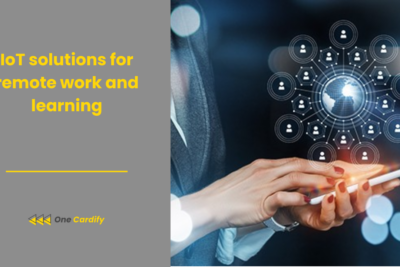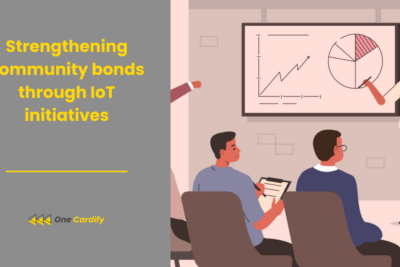
IoT-driven pest control for healthier crops
The investigation into the IoT-driven domain of pest control promises a brighter future of better crop yields. This technique employed current technology to improve proactive and predictive solutions against the swarm of pests that endanger agricultural productivity.The internet of things (IoT) technology allows farmers and agronomists to access instantaneous data and information that enables development of more precise and effective pest management strategies. This not only improves the healthiness of the crop but also promotes sustainable farming practices.The importance of adopting IoT-oriented approaches in insect and pest control is immeasurable. The further we go into this topic, the advantages, methods and outlook of using the mentioned technologies in agriculture are revealed.
Understanding IoT-driven Pest Control
The IoT-based pest control implies the employment of networked devices and sensors to track the health of the crops and pest behavior. With this technology, large data amounts are collected and then analyzed in order to predict pest incursions and determine what control methods are best.The system contains several sensors distributed throughout the field, Drones for detecting insects from the air, and automated traps that are all connected to a base platform for data processing and visualization. It allows the complete view of the agricultural situation for a timely and accurate intervention.The early warning issue is one of the benefits of this technology in that action in advance can be taken against possible threats of pests. It also minimizes crop damage and therefore, the use of chemical pesticides, promoting a more environmentally sound way of pest control.In addition, the IoT based pest control systems can be tailored to cover specific crops and settings, thus making them a multi-purpose weapon against pests.
Related content
Benefits of IoT-driven Solutions for Healthy Crops
The use of IoT for pest control comes with many advantages. Farmers will be able to improve pest control strategies by accessing real-time the population levels of pests and their behavior, leading to healthy crops and increased yields.The accuracy in pest control not only protects the crops, but also reduces the use of pesticides, which leads to lower environmental influence. The data obtained also can help in understanding the dynamics of pests that is significant in the development of improved pest control methods in future.Another key advantage is the saving of both labor and operational costs. The automated control and analysis remove the need for manual checks, what makes the pest management more economical and resource sparing.In addition, solutions based on IoT can increase the safety of food by reducing the application of chemicals harmful to crops, which in turn, leads to healthier food to the end-consumer.
Implementing IoT in Agriculture
Application of IoT technology towards pest control passes through several stages. To begin with, it is important to understand the requirements of the farm and the pests that it has. This will help in choosing the suitable sensors and devices.After the hardware has been set up, the second step is to link it with software platforms that can analyze the data. Such platforms can give practicable insights and recommendations on control strategies against pests.It is also critical to provide training for the staff and the farmers on how to use these technologies effectively. Understanding the data and making use of the insights is vital in realizing the full benefits of IoT-based pest control.Since the scalability of IoT solutions in this regard refers to their adaptability to multiple types and sizes of farms, they are suitable for both smallholdings and large agribusinesses, making them a versatile option for all sorts of agricultural enterprises.Finally, periodic maintenance procedures and updates of the IoT devices and software system enable the system to be effective over time, and allow the system to be updated according to new pests and the changing environmental conditions.
Challenges and Considerations
Although it has many benefits, the implementation of IoT in pest control is not without difficulties. The cost and arrangements to establish such a system can be scary for the farmers while setting up mainly in developing area.Issues of data security with the information of farmers also need to be looked at making sure that it is well protected. Another crucial factor includes the robustness of the technology in various climatic conditions and terrains.On which sensors and devices used of what quality and scope also depends on the success of the pest control system driven by IoT. Systems that are not well designed may give wrong data, hence inadequate pest control strategies.But innovations in technology and availability improvements, these challenges are slowly being resolved, opening the way for broader adoption of IoT in agriculture.
The Future of Farming with IoT
The possibility of IoT-based pest control to revolutionize agriculture is huge. Technological advancement will also lead to more complex systems with improved predictive and proactive pest control measures.Integration with other technologies such as artificial intelligence, and machine learning will help in pest prediction and control refinements to other challenges making farming more resilient to environmental challenges.The partnership among tech developers, agronomists, and farmers will be critical in determining the future of IoT in agriculture. Collaboratively, they will assure that the solutions produced are of crop production’s real needs.In the end, pest control in IoT-driven terms is a move toward more ecological and productive ways of farm, ensuring healthy crops and bright future for agriculture.
FAQ
IoT-driven pest control involves using interconnected devices and sensors to monitor and manage pest activity in agriculture, offering real-time data for precision pest management.
IoT improves pest control by providing early warnings of pest invasions, enabling precise pesticide application, reducing environmental impact, and improving crop health and yields.
Benefits include enhanced pest management precision, reduced use of pesticides, lower labor costs, improved environmental sustainability, and healthier food products.
Challenges include the high initial investment, potential data security issues, technology reliability across different conditions, and the need for farmer training on new technologies.
Yes, IoT solutions are scalable and can be adapted to suit the needs of diverse farming operations, from small family farms to large agribusinesses.
IoT technology is expected to become more sophisticated with enhanced predictive analytics, automation, and integration with AI and machine learning for better pest control.
Collaboration among tech developers, agronomists, and farmers ensures that IoT solutions address actual agricultural needs and challenges, driving innovation and adoption.
Conclusion
The way to achieving IoT-based pest control for crops for the sake of healthy harvests is an exciting and challenging one. It heralds the start of precision agriculture that may greatly improve crop health, yields, and sustainability.Though challenges persist, the constantly improving technologies and partnerships across the agricultural sector provide a hopeful prospect that these innovative solutions will be adopted.Given IoT being on the cutting edge, the future of farming looks more promising, not only for healthier crops but also for a healthier Earth.But the IoT-based model of farming and pest control are not about the agriculture itself, it’s about making a proper future for the next generations.






Related Posts